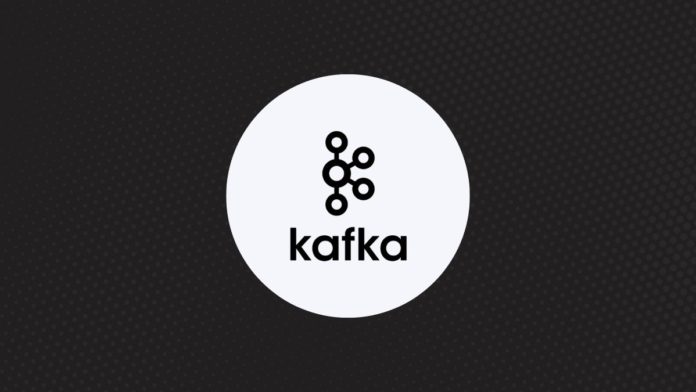With rapid technological evolution, the demand for faster business operations is increasing. To achieve this, you can opt for real-time data streaming solutions as they help you understand market dynamics to make quick decisions for business growth.
Among the several available data streaming platforms, Apache Kafka stands out due to its robust architecture and high-performance capabilities.
Let’s explore Apache Kafka in detail, along with its key features, advantages, and disadvantages. Following this, you can use Kafka for diverse applications in domains including finance, telecommunications, and e-commerce.
What Is Apache Kafka?
Apache Kafka is an open-source event-streaming platform that you can use to build well-functioning data pipelines for integration and analytics. With a distributed architecture, Kafka allows you to publish (write), subscribe (read), store, and process streams of events efficiently.
Kafka consists of servers and clients as primary components that interact with each other through TCP network protocol. The servers are spread across several data centers and cloud regions. Some of the servers form a storage layer and are called brokers. On the other hand, clients are software applications that enable you to read, write, and process streams parallelly.
The client applications that allow you to publish (write) events to Kafka are called producers. Conversely, the client applications with which you can subscribe (read) to events are called consumers. The producers and consumers are decoupled from each other, facilitating efficiency and high scalability.
To help you store all the streams of events, Kafka offers a folder-like system called topics. Each topic consists of multiple producers and consumers. Every event that you read or write in Kafka contains a key, value, timestamp, and optional metadata header.
The primary use of Kafka is for event streaming. It is a technique of capturing data in real-time from various sources, including databases, sensors, IoT devices, and websites. You can then manipulate and process these events to load them to suitable destinations. Event streaming finds its usage in different industries, such as finance for payment processing or the healthcare industry for real-time patient monitoring.
Key Features of Apache Kafka
To understand how Kafka works, you should know about its prominent features. Some of these key features are as follows:
Distributed Architecture
Kafka has distributed architecture with clusters as a primary component. Within each cluster, there are multiple brokers that enable you to store and process event streams. To ingest data in Kafka, you can start by publishing events to the topic using producers. Each topic is partitioned across different Kafka brokers. The newly published event is added to one of the topic’s partitions. Events with identical keys are added to the same partition.
In a broker, you can store data temporarily, and then consumers can read or retrieve data from the broker. It is this distributed working environment that makes Kafka a fault-tolerant and reliable data streaming solution.
Kafka Connect
Kafka Connect is a component of Apache Kafka that helps you integrate Kafka with other data systems. The source connector offered by Kafka Connect facilitates the ingestion of data as streams into Kafka topics. After this, you can use sink connectors to transfer data from Kafka topics to data systems such as Elasticsearch or Hadoop. Such capabilities of Kafka Connect allow you to build reliable data pipelines.
Data Replication
In Kafka, as every topic is replicated across multiple brokers, your data is also copied across these brokers. This prevents data loss, ensuring durability. The number of copies of partitions within topics that appear on different brokers is known as the replication factor. It is considered that a replication factor of three is most suitable as it creates three copies, increasing fault tolerance. If the replication factor is one, you will have only one copy, which can be utilized in testing or development, leading to data loss.
Scalability
You can scale Kafka clusters horizontally by adding more broker nodes to distribute growing data volumes. In addition, the partitioning feature supports parallel data processing, enabling efficient management of high data load. For vertical scaling in Kafka, you can increase hardware resources such as CPU and memory. You can opt for horizontal or vertical scaling depending on your requirements to utilize Kafka for complex and high-performance applications.
Multi-Language Support
Kafka supports client applications written in different programming languages, including Java, Scala, Python, and C/C++. Such multi-language compatibility can help you develop data pipelines using Kafka in a computational language of your choice.
Low Latency
You can perform low-latency operations using Kafka due to its support for partitioning, batching, and compression methods. In the batching process, you can read and write data in chunks, which reduces latency. The batching of data within the same partition facilitates compression, leading to faster data delivery. To compress data, you need to use various compression algorithms, including lz4 or snappy.
Advantages of Using Apache Kafka
A powerful Apache Kafka architecture and high throughput make it a highly beneficial streaming platform. Some of its advantages are:
Real-time Functionality
By using Kafka, you can conduct real-time data-based operations due to its low latency and parallel data processing features. Such functionality helps in the faster delivery of enterprise services and products, giving you a competitive edge and increasing profitability.
Secure Data Processing
Kafka offers encryption (using SSL/TLS), authentication (SSL/TLS and SASL), and authorization (ACLs) methods to secure your data. Due to these techniques, you can protect sensitive data from breaches and cyberattacks while using Kafka.
Multi-Cloud Support
You can deploy Kafka on-premise as well as in the cloud, depending on your infrastructural setup and budget. If you opt for a cloud-based Kafka service, you can leverage it from vendors such as Confluent, AWS, Google Cloud, Microsoft Azure, or IBM Cloud. By providing multi-cloud support, Kafka enables you to choose the best service provider at an optimal cost.
Cost Optimization
Apache Kafka allows you to optimize costs to reduce the expenses of data-based workflow management. To do this, you can deactivate Kafka resources, such as topics that are not in active usage, to reduce memory and storage costs. By using compression algorithms, you can shrink the data load to reduce expenditure.
You should also fine-tune brokers regularly according to your current workload to avoid the unnecessary usage of default parameters and minimize infrastructural expenses. All these practices help you to efficiently use Kafka at a lower cost and invest considerably more in other critical business operations.
Disadvantages of Using Apache Kafka
Despite numerous benefits, you may encounter a few challenges while using Kafka. Some of its limitations include:
Complexity
You may find it difficult to use Kafka due to its complex architecture with several components, such as clusters, brokers, topics, and partitions. Understanding the functionalities of these architectural elements requires specialized training, which can be time-consuming.
Operational Overhead
Tasks such as broker configuration, replication management, and performance monitoring require expertise. As an alternative, you can hire an expert professional, for which you will have to pay higher compensation, increasing overall operational costs.
Limitations of Zookeeper
Zookeeper is a central coordination service that helps you manage distributed workloads in Kafka. It enables you to store and retrieve metadata on brokers, topics, and partitions. While Zookeeper is a critical Kafka component, it makes the overall Kafka data system complex and supports a limited number of partitions, introducing performance bottlenecks. To avoid these issues and for better metadata management in Kafka, you can now utilize KRaft (Kafka Raft) instead of Zookeeper.
Use Cases of Apache Kafka
Due to several benefits and highly functional features, Kafka is used extensively across various domains. Here are some of its popular use cases:
Finance
Apache Kafka is a popular data streaming tool that facilitates continuous data ingestion. By utilizing this capability, you can use Kafka to ensure constant data availability for predictive analytics and anomaly detection in the finance sector. With the help of Kafka, you can process live market feeds, identify unusual trading patterns, and make real-time decisions in financial institutions.
Retail
In the retail industry, you can use Kafka to ingest and process customer data for behavior analysis and provide personalized product recommendations. To do this, you can track customer’s activities on your website. You can then publish data such as page views, searches, or actions taken by users to Kafka topics. Later, you may subscribe to these feeds for real-time monitoring and load them to Hadoop or any offline data warehousing system for processing and reporting.
Advertising
You can connect Kafka with platforms like LinkedIn, Meta (Facebook), and Google to collect streams of marketing data in real-time. Analyzing this data gives you useful insights into industry trends based on which you can design effective advertising campaigns.
Communication
Built-in partitioning, replication, and fault tolerance capabilities of Kafka make it a suitable solution for message processing applications. Companies like Netflix use Kafka for scalable microservice communication and data exchange.
Conclusion
Apache Kafka is a scalable data streaming platform with high throughput and low latency. Having several advantages, such as real-time processing and robust replication capabilities, Kafka is widely used across different industries. However, while using Kafka, you may encounter some challenges, including operational overhead. Despite these challenges, with proper monitoring and optimization, you can use Kafka in your organization for real-time data-driven activities.
FAQs
1. Is Kafka a database?
No, Kafka is not a database. It is an event streaming service, but you can ingest data in Kafka in a way that is similar to databases during data integration. It also supports partitioning and long data retention features, making it appear as a database. However, you cannot query data effectively in Kafka, so it is incapable of offering all the capabilities of a database.
2. How does Kafka depend on Zookeeper?
Zookeeper is a coordination system using which you can detect server failures while using Kafka. You can also leverage Zookeeper to manage partitioning and in-sync data replication.


